Eight-thousanders are peaks that rise above sea level by more than 8000 m. There are 14 main peaks above 8000, climbing which is an honorable and difficult task in the world of high-altitude mountaineering, we will talk about this in this article.
Where are the eight-thousanders
All 14 main peaks above 8000 m are located in two mountain ranges of Asia. In the Himalayas, the youngest mountains on the planet, which continue to grow, there are 10 eight-thousanders. The other 4 eight-thousanders are located in the Karakoram.
Most of the peaks are located on the borders of neighboring countries, but only there are two roughly equivalent classic routes to Everest from different sides.
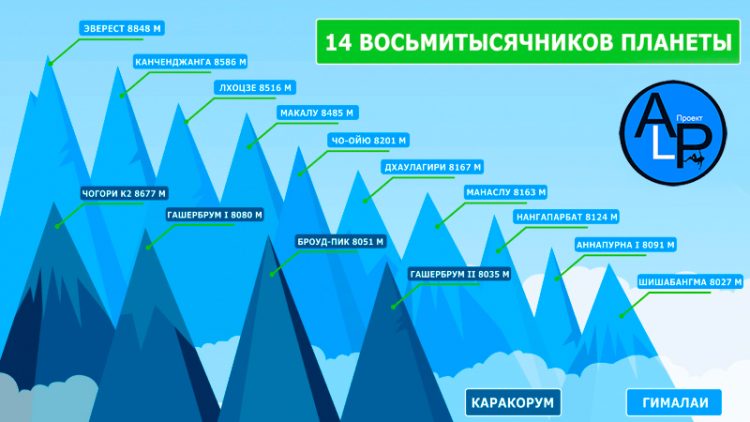
Countries with eight-thousanders:
- Nepal is the highest mountain country in the world. 8 eight-thousanders, three of which are located entirely within the country.
- China – 9 eight-thousanders, one within the country. But most of the peaks from China have very difficult routes, and the regions of the Chinese Karakoram are difficult to access and little explored, so from the Chinese side, people usually climb only three peaks: Everest, Cho Oyu and Shishapangma. But there is an asphalt road from the base camps to each of these mountain peaks.
- Pakistan – 5 eight-thousanders, one inside the country. It is noteworthy that the classic routes to all of them go from Pakistan.
- India – 1 peak Kanchenjunga, and even then the classic ascent is considered to be from Nepal.
All eight-thousanders of the world. List by height
Everest (8848 m) is the highest peak on the planet
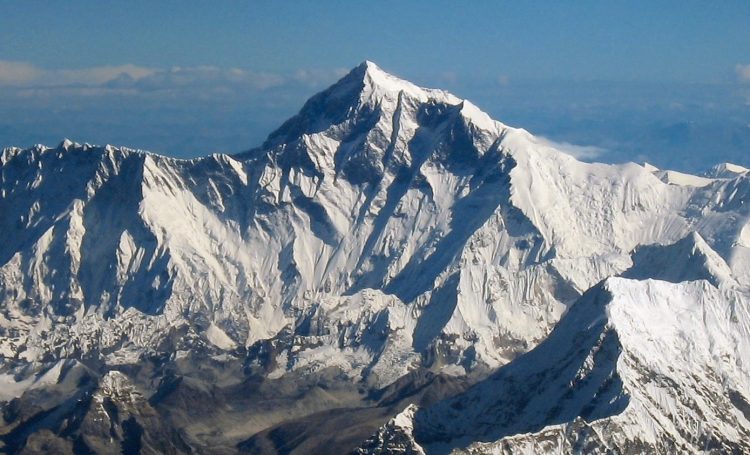
Everest has other names – Chomolungma and Sagarmatha. It is located in the Himalayas, on the border of Nepal and China. There are two classic climbing routes – from the South (Nepal) and the North (China). The most popular eight-thousander, as it is the highest and relatively safe (mortality rate 3%). Read the detailed article: death on Everest. In total, more than 10,000 ascents have been made, 212 of them without oxygen.
- Best season: spring
- First ascent: May 29, 1953, Sherpa Tenzing Norgay and New Zealander Edmund Hillary
K2 (8611 m) is the northernmost eight-thousander
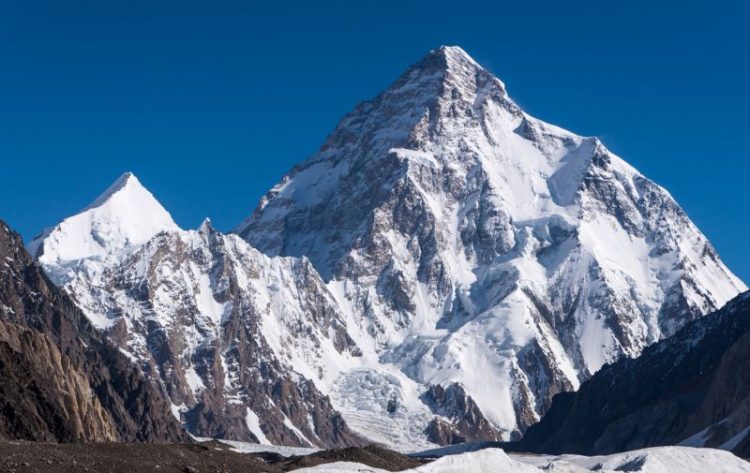
K2, or Chogori – the second peak of the world. It is located in the Karakoram, on the border of Pakistan and China, but is virtually inaccessible from the latter. It has a reputation for being the most difficult and unpredictable eight-thousander. There are no easy climbing routes, usually bad and very cold weather. For a long time it was the deadliest peak, but even today, the mortality rate of climbers on this mountain is about 19%.
- Best season: summer
- First ascent: July 31, 1954, Italians Lino Lacedelli and Achille Compagnoni
Kanchenjunga (8586 m)
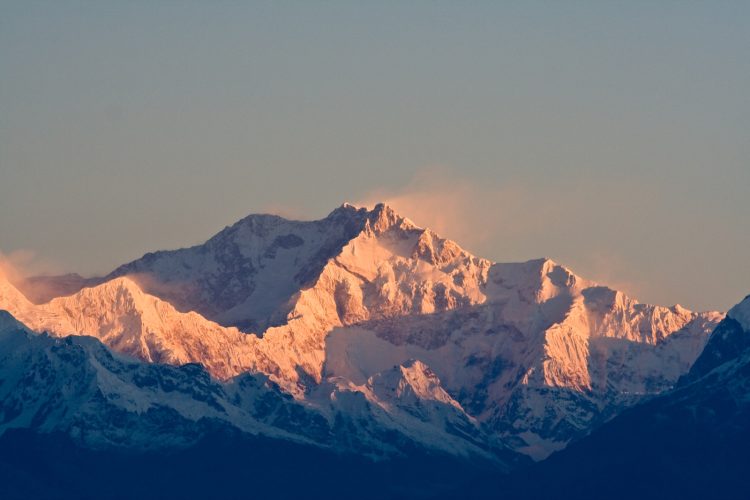
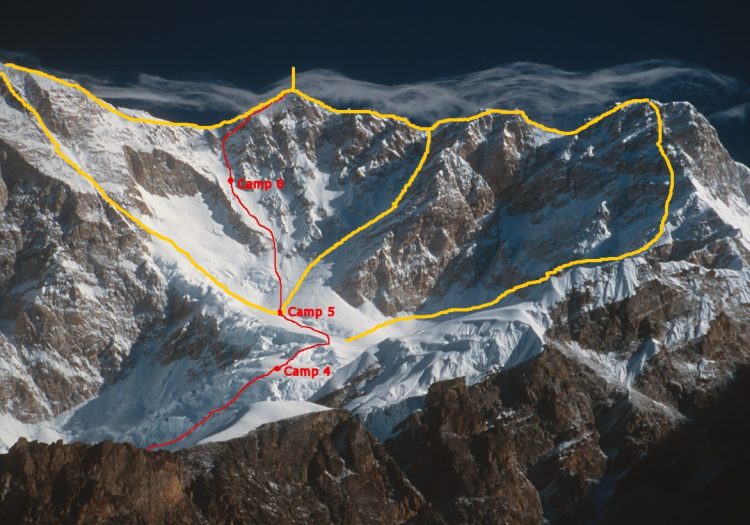
Kanchenjunga is located in the Sikkim Himalayas, on the border of Nepal and India in a remote, wild and inaccessible region. It has several secondary peaks above 8000. There is a belief that this is a female mountain that does not allow and kills all women who try to climb it. Indeed, the first successful female ascent was made only in 1998.
- Best season: spring
- First ascent: May 25, 1955, by Britons George Band and Joe Brown
Lhotse (8516 m)
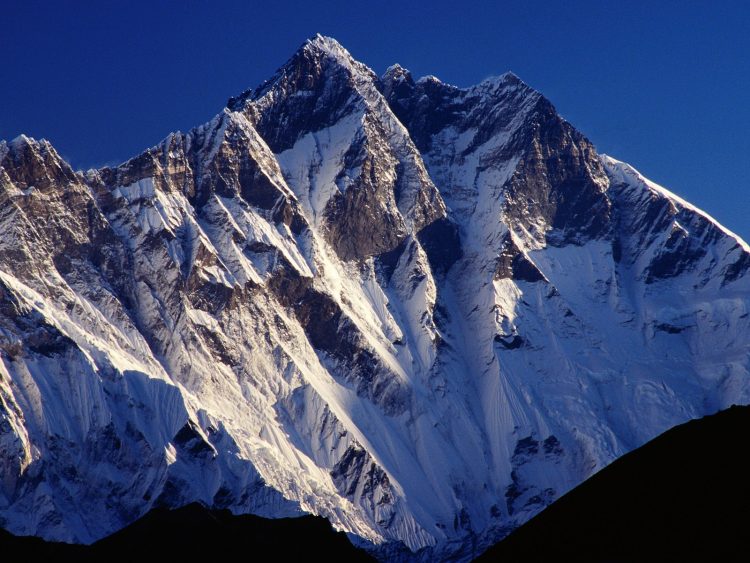
Located in the Himalayas, on the border of Nepal and China. The classic route runs from Nepal to the fourth camp, which coincides with the route of the ascent to Everest. It has two more peaks above 8000 m – Lhotse Shar (8383 m) and Lhotse Middle (8413 m).
- Best season: spring
- First ascent: May 18, 1956, by the Swiss Ernst Reiss and Fritz Luchsinger
Makalu (8485 m)
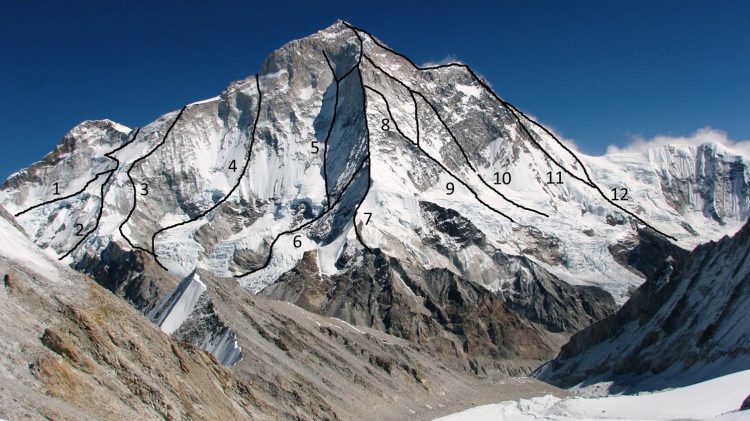
Located in the Himalayas, on the border of Nepal and China. The classic route goes from Nepal. The summit opens up in all its glory from the lower Base Camp and is called the “Black Giant”. According to the standard ascent route, this is a relatively safe eight-thousander, since the risk of avalanches, rockfalls is minimal, there is no active icefall or cracks. At the same time, even the classic ascent route is very difficult and physically exhausting, requiring certain technical skills. The mortality rate is about 9%.
- Best season: spring
- First ascent: May 15, 1955, by Frenchmen Lionel Terrail and Jean Couzy
Cho Oyu (8201 m)
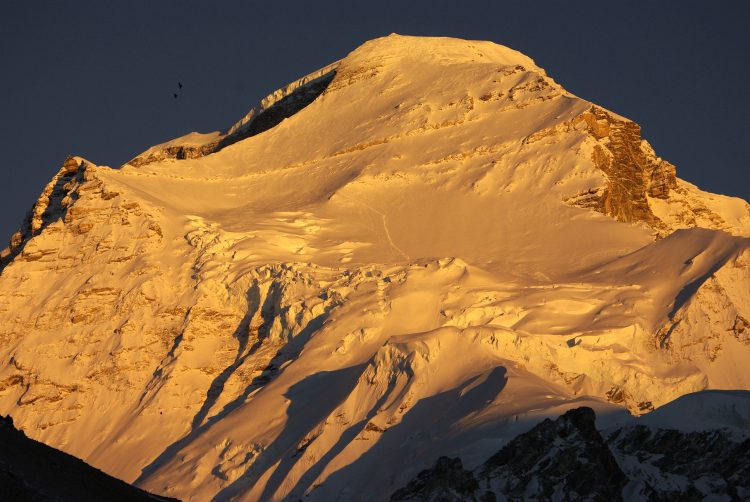
Located in the Himalayas, on the border of Nepal and China (Tibet). The classic route from China is one of the easiest to climb for the first 8000. There are no cracks, rockfalls, a small chance of avalanches and low technical difficulty. But China prohibits ascents without Sherpas and has a very expensive permit, which makes climbing Cho Oyu an order of magnitude more expensive than the Nepalese eight-thousanders.
- Best season: autumn
- First ascent: October 19, 1954, by Austrians Herbert Tichy, Josef Jöchler and Sherpa Pazang Dawa Lama
Dhaulagiri 1 (8167 m)
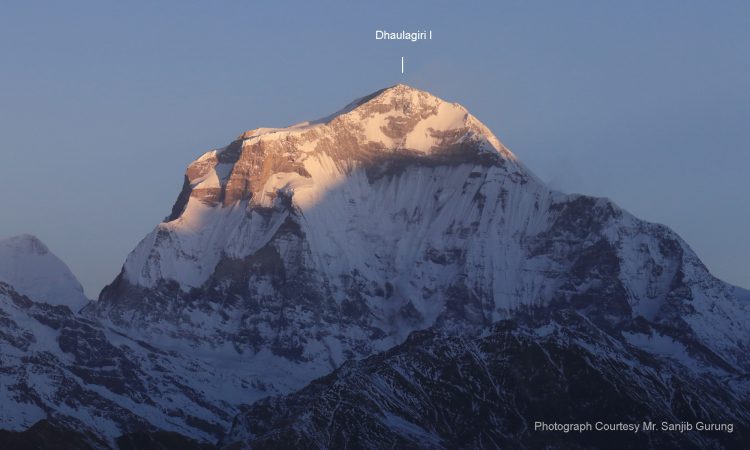
Located in the Himalayas, entirely in Nepal. One of the most beautiful mountain profiles and the most difficult classic routes. The mortality rate is 15.6%.
- Best season: spring, but there are ascents in autumn
- First ascent: May 13, 1960, Swiss expedition
Manaslu (8163 m)
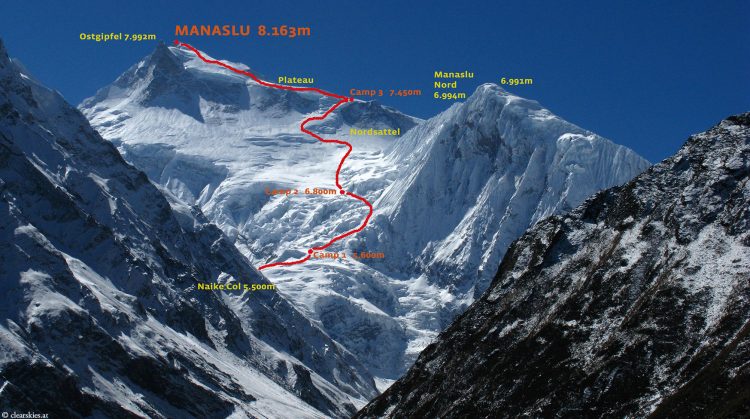
Located in the Himalayas, entirely in Nepal. In our opinion, it is the best option for the first 8000. Technically, it is a little more difficult than Cho Oyu, but much cheaper with a permit. The most difficult section is between the first and second camps, there are several cracks and stairs. The main danger avalanches on the mountain.
- Best season: autumn
- First ascent: May 9, 1956, Japanese expedition
Nanga Parbat (8125 m)
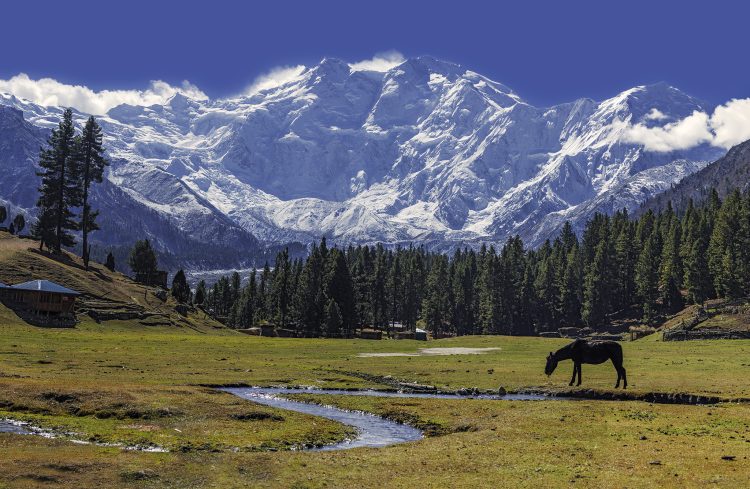
Located in the Kashmir Himalayas, entirely in Pakistan. One of the most difficult and dangerous eight-thousanders, with a mortality rate of 21%. The most beautiful base camp, which is located on the green, in the Diamir Valley. A very large difference in the wall from the base camp to the summit.
- Best season: summer
- First ascent: July 3, 1953, Austrian Hermann Buhl
Annapurna 1 (8091 m)
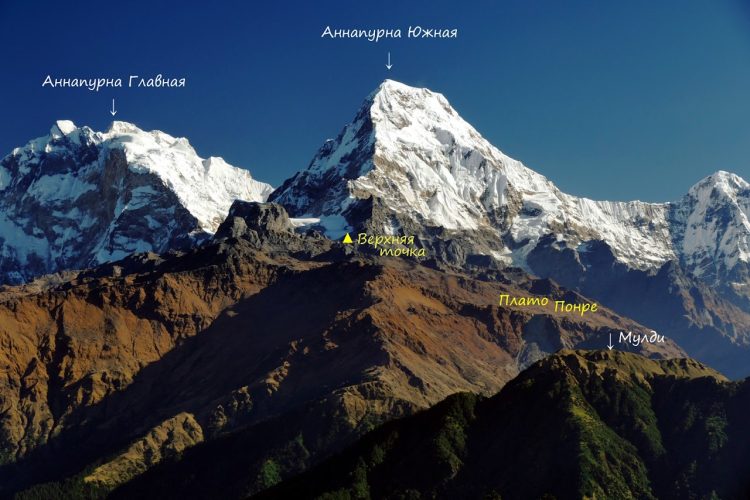
Located in Himalayas, entirely in Nepal. Annapurna is both the first eight-thousander to be climbed by man and the most dangerous peak with the fewest successful ascents to date. The mortality rate is 26.7%, and only 266 people have reached the summit. The main danger is avalanches, so Annapurna is often climbed acclimatized, to reduce the number of treks up and down the mountain to a minimum.
- Best season: spring
- First ascent: June 3, 1950, by Frenchmen Maurice Herzog and Louis Lachannel
Gasherbrum 1 (8080 m) – Hidden Peak
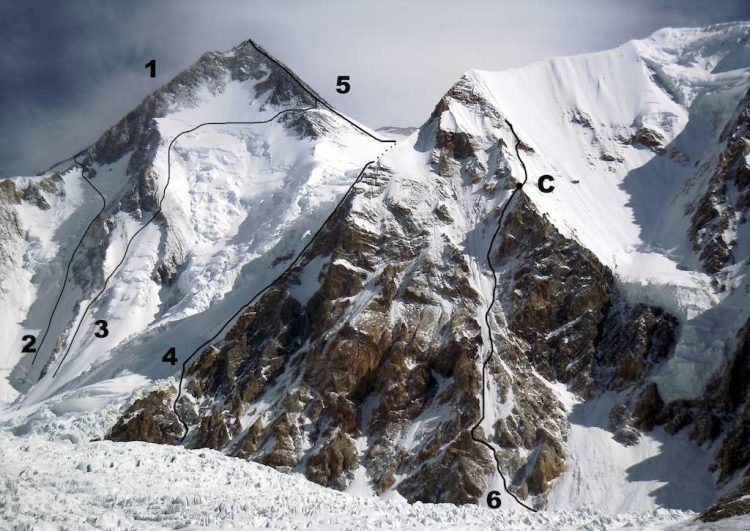
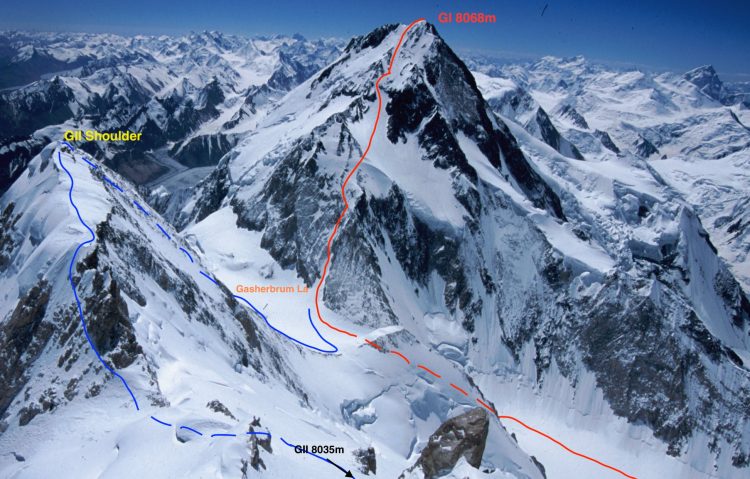
Located in the Karakoram, on the border of Pakistan and China. The classic route goes from Pakistan. The difficult and grueling trek along the glacier from the base camp adds additional difficulty to the already difficult summit.
- Best season: summer
- First ascent: July 5, 1955, American expedition
Broad Peak (8051 m)
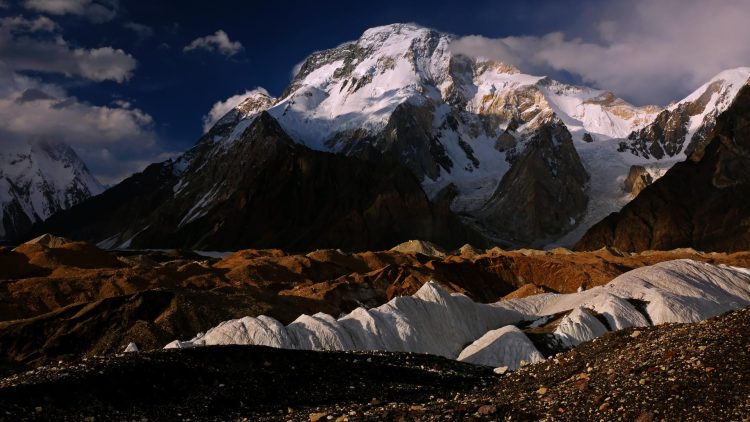
Located in Karakoram, on the border of Pakistan and China. The classic route goes from Pakistan. A relatively easy and safe peak for climbing, located in close proximity to K2. Many climbers during an expedition to K2 use Broad Peak for acclimatization.
- Best season: summer
- First ascent: June 9 1957, Austrian expedition
Gasherbrum 2 (8035 m)

Located in the Karakoram, on the border of Pakistan and China. The classic route goes from Pakistan. One of the easiest technically and safest eight-thousanders. The main difficulty is the glacier crossing between the base and first camp. Due to the presence of a glacier and less developed infrastructure in Pakistan, it is less popular than Manaslu and Cho Oyu.
- Best season: summer
- First ascent: July 7, 1956, Austrian expedition
Shishapangma (8027 m)
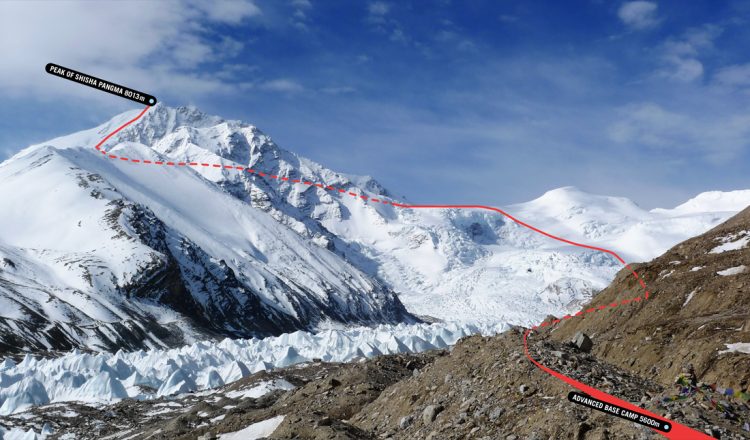
Located in the Himalayas, entirely in China. The lowest eight-thousander with a simple classic route. But there is a problem. The classic route leads to the summit of Shishapangma Central, 8008 m high. Then there is a dangerous and difficult traverse to the main summit (8027 m), which is counted in the 14×8000 program. This makes reaching the main summit via the classic route is almost impossible, so in recent years expeditions have been increasingly carried out along the steep southern wall.
- Best season: Autumn
- First ascent: May 2, 1964, Chinese expedition
How many eight-thousanders are there on the planet?
Above, we only talked about the main summits above 8,000 meters. But there are many more secondary summits, here is a list of them, sorted by importance:
- Broad Peak central, 8011 m
- Kangchenjunga W-Peak (Yalung Kang), 8505 m
- Kangchenjunga S-Peak, 8476 m
- Kangchenjunga C-Peak, 8473 m
- Lhotse C-Peak I, 8410 m
- Lhotse Shar, 8383 m
- K2 SW-Peak, 8580 m
- Lhotse C-Peak II, 8372 m
- Everest W-Peak, 8296 m
- Yalung Kang Shoulder, 8077 m
- Kangchenjunga SE-Peak, 8150 m
- K2 P. 8134 (SW-Ridge), 8134 m
- Annapurna C-Peak, 8013 m
- Nanga Parbat S-Peak, 8042 m
- Shisha Pangma C-Peak, 8008 m
- Everest NE-Shoulder, 8423 m
- Everest NE-Pinnacle III, 8383 m
- Lhotse N-Pinnacle III, 8327 m
- Lhotse N-Pinnacle II, 8307 m
- Lhotse N-Pinnacle I, 8290 m
- Everest NE-Pinnacle II, 8282 m
Total we have another 21 peaks above 8,000 meters, many of which have not yet been set foot by human foot. And in total there are 35 eight-thousanders, if we take into account secondary summits.
Material prepared by: alp.org.ua

